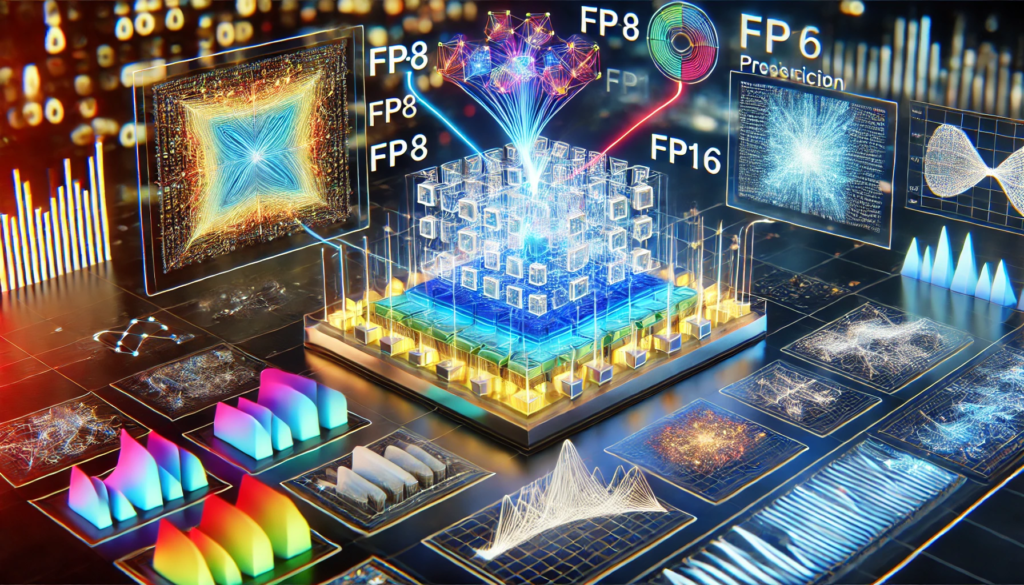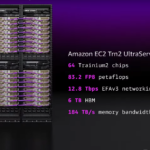When diving into the world of high-performance computing (HPC) and artificial intelligence (AI), you might come across terms like FLOPS, teraflops, and petaflops. These concepts are essential to understanding how powerful modern computing systems are, such as Amazon’s Trn2 instance, which boasts up to 20.8 FP8 petaflops of compute power. But what do these terms really mean? Let’s break it down step by step.
What Are FLOPS?

FLOPS stands for Floating Point Operations Per Second. It’s a measure of a computer’s performance, particularly its ability to handle complex mathematical calculations involving floating-point numbers. Floating-point numbers are numbers with decimal points, and they’re crucial for tasks like simulations, graphics rendering, and AI model training.
For example, a single floating-point operation could be:
- Adding two numbers: 1.23 + 4.56
- Multiplying two numbers: 3.14 × 2.71
The more FLOPS a computer can perform in a second, the faster it can process data-intensive tasks.
Scaling Up: From FLOPS to Petaflops
To understand just how powerful a system like Trn2 is, let’s look at the hierarchy of FLOPS:
- 1 FLOP: One floating-point operation per second.
- 1 Kiloflop (kFLOP): 1,000 floating-point operations per second.
- 1 Megaflop (MFLOP): 1 million floating-point operations per second.
- 1 Gigaflop (GFLOP): 1 billion floating-point operations per second.
- 1 Teraflop (TFLOP): 1 trillion floating-point operations per second.
- 1 Petaflop (PFLOP): 1 quadrillion floating-point operations per second (1,000 teraflops).
To put a petaflop into perspective, if every person on Earth performed one calculation per second, it would take over 4 years to do what a petaflop system can achieve in just one second.
Why Are FLOPS Important?

High FLOPS ratings are critical for applications like:
- AI Training: Large language models and image recognition systems require billions of calculations to adjust weights and biases in neural networks.
- Scientific Simulations: Weather forecasting, molecular modeling, and astrophysics simulations depend on massive computational power.
- Graphics and Gaming: Realistic rendering of 3D environments involves handling complex lighting and physics calculations in real-time.
What Makes Trn2’s 20.8 FP8 Petaflops Special?
Trn2’s compute power is measured in FP8 petaflops. FP8 stands for Floating Point 8-bit, a precision format optimized for AI and machine learning tasks. By reducing the precision from 32 or 16 bits to 8 bits, Trn2 achieves faster computations without sacrificing accuracy for most AI workloads.
At 20.8 petaflops, a single Trn2 instance is capable of performing 20.8 quadrillion FP8 floating-point operations per second. This immense power allows AI researchers and engineers to train larger models faster, leading to quicker breakthroughs in fields like natural language processing, robotics, and more.
Real-World Implications of Petaflop Computing
The sheer scale of petaflop computing opens doors to new possibilities:
- Accelerating AI Innovations: Models like ChatGPT and image generation tools require enormous computational resources. With systems like Trn2, these can be trained in weeks instead of months.
- Improving Scientific Discovery: Faster simulations mean researchers can iterate more quickly, testing hypotheses and refining models in less time.
- Enhancing User Experiences: High-performance systems enable real-time AI applications, such as voice assistants and recommendation engines, to respond more accurately and quickly.
Conclusion
Understanding FLOPS and petaflops gives you a glimpse into the raw computational power driving today’s technological advancements. Systems like Trn2, with their 20.8 FP8 petaflops, represent a new era of efficiency and scalability in computing. Whether you’re an AI enthusiast, a researcher, or just curious about supercomputing, appreciating these concepts helps you grasp the incredible progress shaping our digital future.


